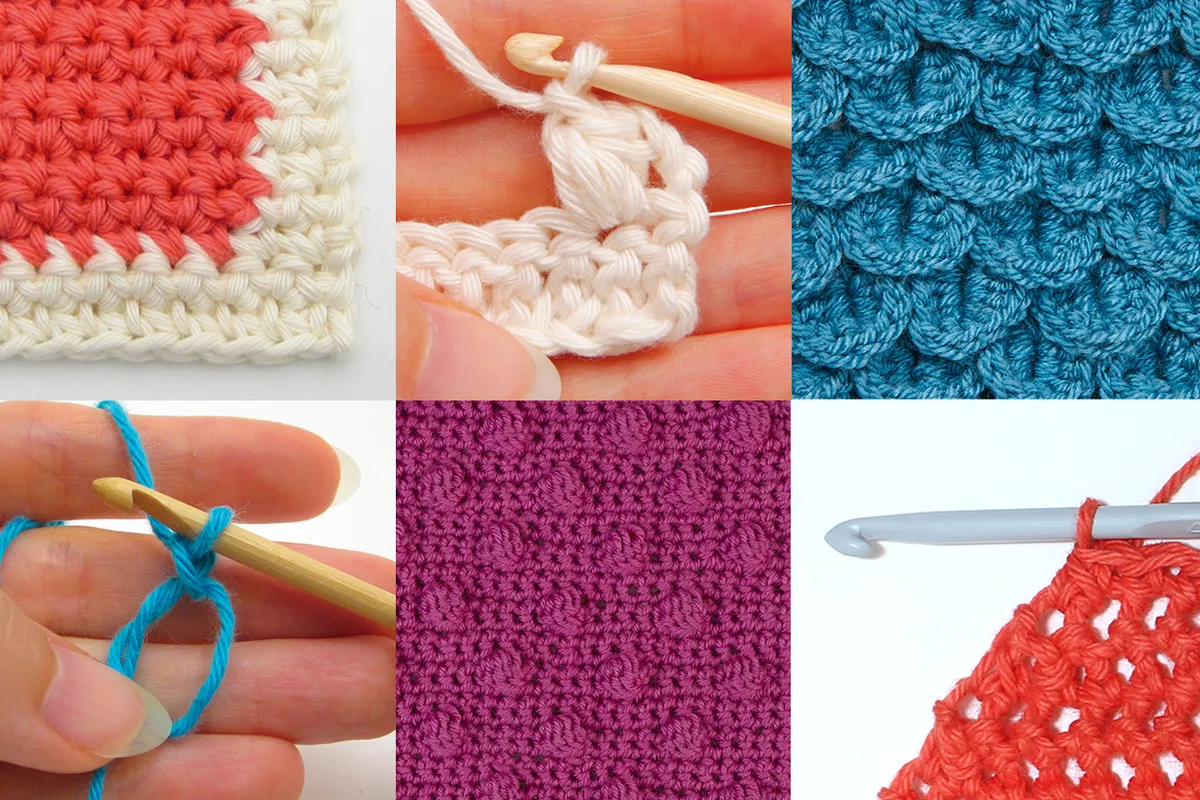There are a lot of crochet terms that can confuse beginners, so we're here to help you learn all those fancy acronyms, labels, methods and slang.
Below you'll find our definitive guides to all those crochet terms and phrases that you might hear at your crochet club or read online!
Many crochet patterns will also use abbreviations for stitches or to shorten specific crochet terminology. This is mainly to keep patterns to a manageable length, and most good patterns will tell you when terms are abbreviated.
You can find all of the commonly used crochet terms used in patterns in our guide to crochet abbreviations and conversions.
Glossary of Crochet Terms
Amigurumi
Amigurumi is the word given to crocheted stuffed toys. The word is a portmanteau of the Japanese words – ‘ami’ meaning ‘crocheted or knitted’, and ‘nuigurumi’ meaning ‘stuffed doll’.
You can find out more about this fun craft in our What is Amigurumi guide.
Appliqué
The term Appliqué comes from sewing and describes attaching cut-out fabric shapes onto a backing fabric to create patterns and pictures. In crochet this is usually done with motifs and shapes.
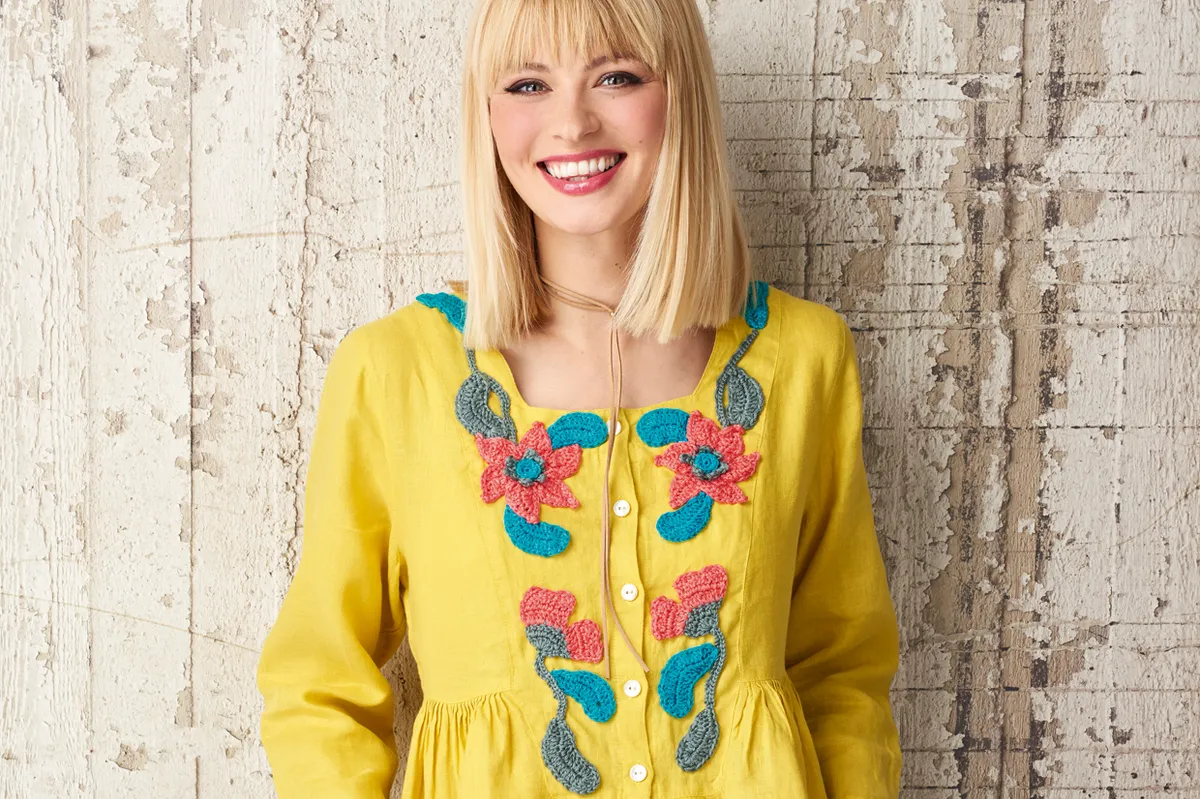
Bobbin
Different from a ball or skein, a bobbin describes yarn that is wound much like that of a sewing thread bobbin - normally wound around a spool (which is often removed after the yarn is wound)

Blocking
Blocking is a finishing technique used with crocheted or knitted items to ensure your crochet fabric lies flat and to the desired final measurements.
Particularly important for using with garments or real wool fibres, blocking involves using water or steam to relax the fibres and neaten up your crochet fabric.
You can find out more in our guide on how to block your crochet using a blocking board
Cake
You can't eat these cakes, but they're still delicious! A yarn cake is a description that is used for yarn that is wound in a way to resemble... well a cake!
This can include yarn you have wound yourself using a wool winder, or it can refer to yarn that is produced by companies that has been spun in this way. Commercially available yarn cakes often include attractive colour gradients, and the benefit of it being spun into a yarn cake is that you can see how the colours transition throughout the whole amount of yarn.
Take a look at our pick of the best yarn cakes.
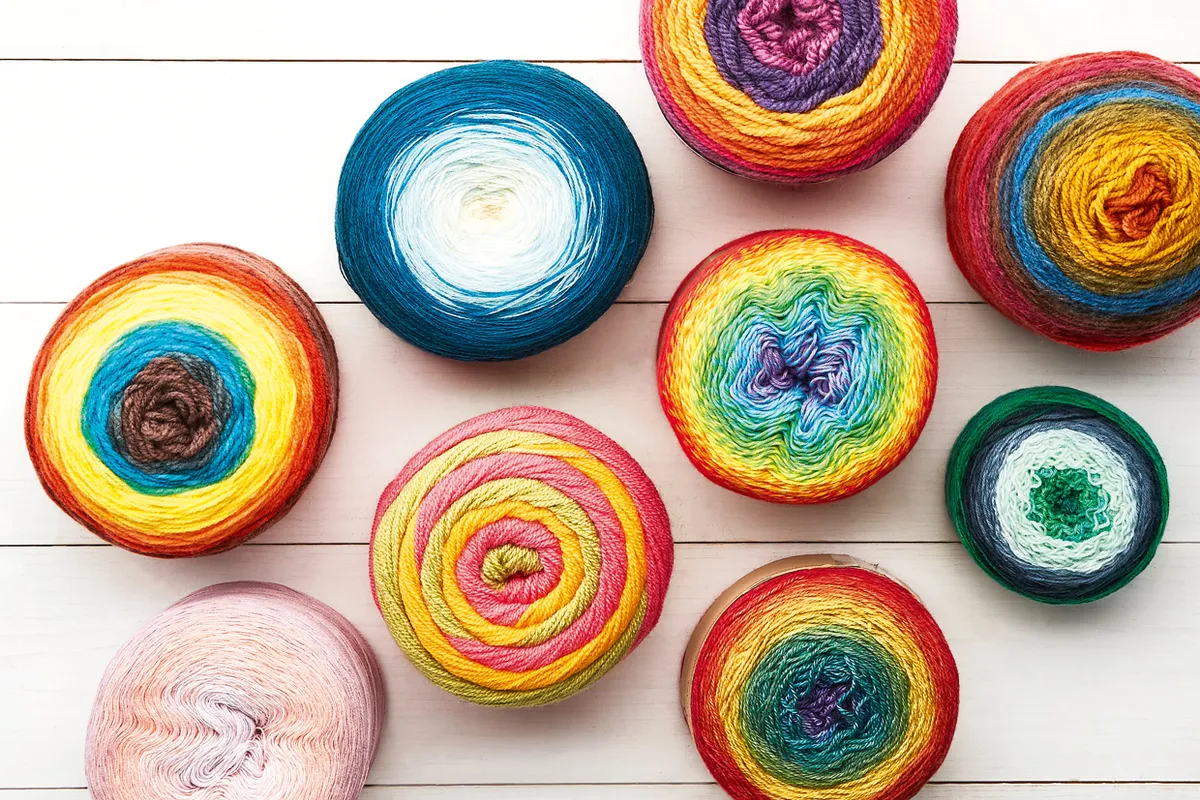
CAL
CAL is an acronym for Crochet-along. When crafters are invited to complete the same pattern, sometimes within a specified time period, often stage by stage.
It’s a good challenge and fosters fuzzy feelings of community among participants.
C2C
An abbreviation for 'Corner-to-corner' – an easy-peasy diagonal crochet technique. You can find out more in out guide on how to do corner-to-corner crochet.
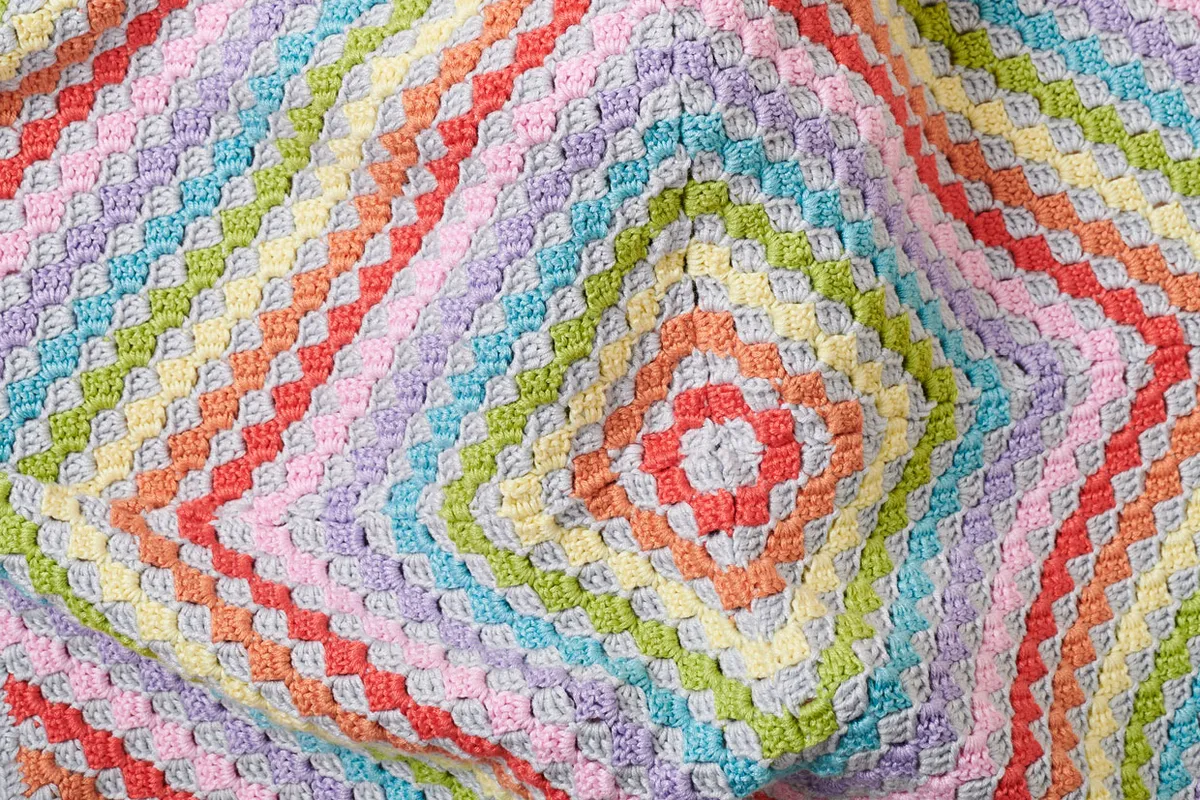
Clusters
Clusters is a generic crochet term for a group of stitches together in the same place.
Often used to create a semi-circle/shell style effect, clusters can be made up of any number of stitches (though most commonly 4 or 5 treble crochet stitches), and if the word 'cluster' is used in a pattern there will normally be a description included of what makes up that cluster.
Crochet-hacking
Crochet-hacking is a trend that has proved really popular in recent years. It follows the 'make do and mend' ethos, and describes taking an old garment or item of clothing and using crochet to update it and give it new life.
This can include altering the garment to create something completely different, or even just updating a garment with appliqué crochet motifs.
Crojo
A portmanteau term referring to your crochet 'mojo' - your enthusiasm or energy for something. For example, "I've lost my crojo" or "I've got my crojo back"
Destash
Sorting your stash (see below) in order to swap, sell, donate or discard unwanted yarns.
Drape
The term drape describes how a piece of fabric hangs, but can also be thought of as describing how flexible a fabric is.
For crochet garments the quality of the drape can be an important factor that affects how well a garment fits or 'flows'.
Yarn choices and different crochet stitches can affect the final drape of a project, for example, double crochet stitches and a chunky yarn will create a more solid fabric that is not as flexible as a fabric made from treble stitches and a 4ply yarn.

Embellish
Embellishing a project is similar to crochet-hacking, where you add some crochet to a garment or item.
This can be as simple as adding some crochet edging on to a top, creating a new crochet strap for a bag, or transforming some flip flops into slippers!
Felting
Felting is the term used for when fibres are merged and matted together.
Normally occurring with natural wool and animal fibres, the felting effect is often achieved by agitating the fibres with hot water or pressure. Some yarns are deliberately produced with fibres that will easily felt thanks to the fibre construction, but felting can also be achieved by machine washing a wool item (although this is a bit of an art form, as shrinkage can also occur).
Of course felting can also occur by accident if you wash a wool item on a non-wool setting on your washing machine. Synthetic and Cotton fibres won't felt.
Frog
Frogging is the act of undoing your crochet, so-called because you ‘rip-it, rip-it’ like the onomatopoeic frog’s ‘ribbit ribbit’ sound. For example, "I went wrong in the first round so I’m frogging it."
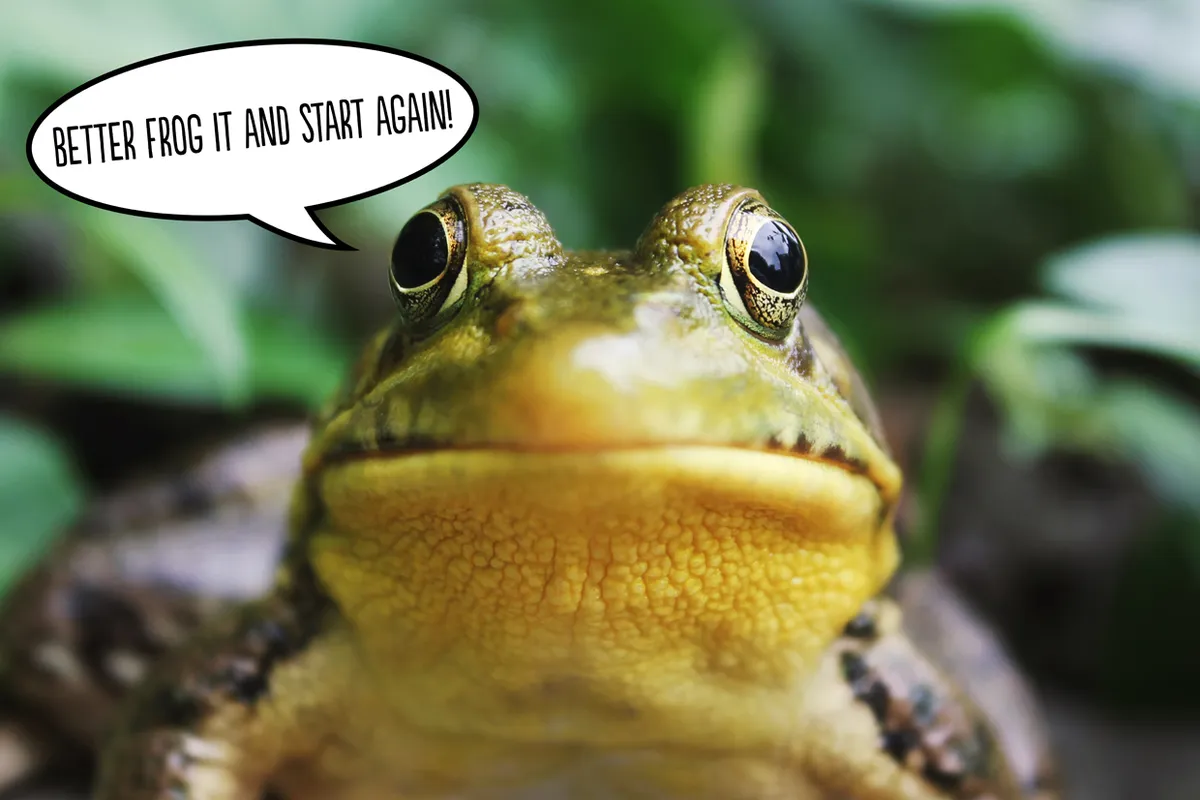
Front/Back/Both loops
Some crochet terms are used to specify variances of the same stitch.
When you see mention of the front or back loops, this is referring to where you will insert you hook in a stitch. If you are just doing a standard stitch, you will be inserting your hook under both loops at the top of your stitch (they resemble a V on it's side).
When a pattern tells you to insert your hook in the front loop only (FLO), this is the loop facing you (or closest to you) - similarly the back loop is the loop furthest away from you.
Check out our tutorial on how to crochet in the front and back loops for more info.
FO
An acronym for 'Finished Object'. You may see UFO (Unfinished Object). For examples, "So proud of my latest FO!"
Halo
The halo of a yarn is the description for the 'fuzziness' or 'fluffiness' of the loose fibres on a yarn.
The halo can be a good indicator of how much a yarn will felt and mat together when worked up, but at the same time yarns with a large halo will be more inclined to pilling (see below).
HOTH
Acronym for 'Hot Off The Hook'. This crochet term is normally used when posting or sharing a picture of an item you've just finished making
Increase/Decrease
Although this may seem obvious (the increasing and decreasing of stitches), these crochet terms can look a bit confusing at first as patterns won't always specifically use these words.
Increases will often be achieved by working multiple stitches into the same place - for example, '2tr in next st'. Likewise, decreases are done with special decrease stitches, for example dc2tog (literally meaning 'double crochet two together), which is a way of turning two double crochet stitches into just one stitch.
Find out more in our how to make a crochet increase and how to make a crochet decrease tutorials.
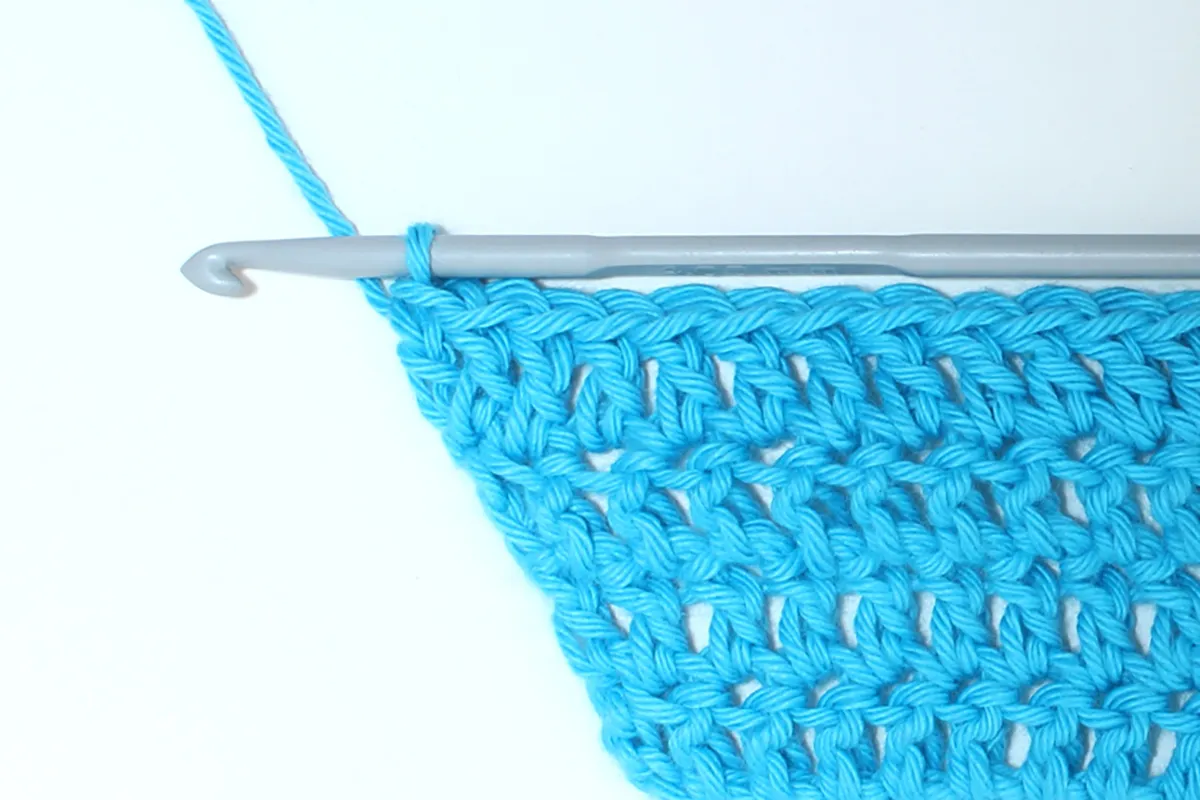
LYS
An acronym for 'Local Yarn Store'. You may occasionally see the similar term B&M store, referring to a 'Bricks and Mortar' store.
Take a look at our pick of the 30 best yarn stores to visit in the UK.
Magic ring
Sometimes also called 'Magic Loop', 'Magic Circle', 'Drawstring Loop' or 'Adjustable loop'. This is a starting technique often used with Amigurumi or other circular projects.
It allows you to create your first round of stitches and then tighten the loop so there is no visible hole in the centre of your round. You can find our video tutorial and guide here!
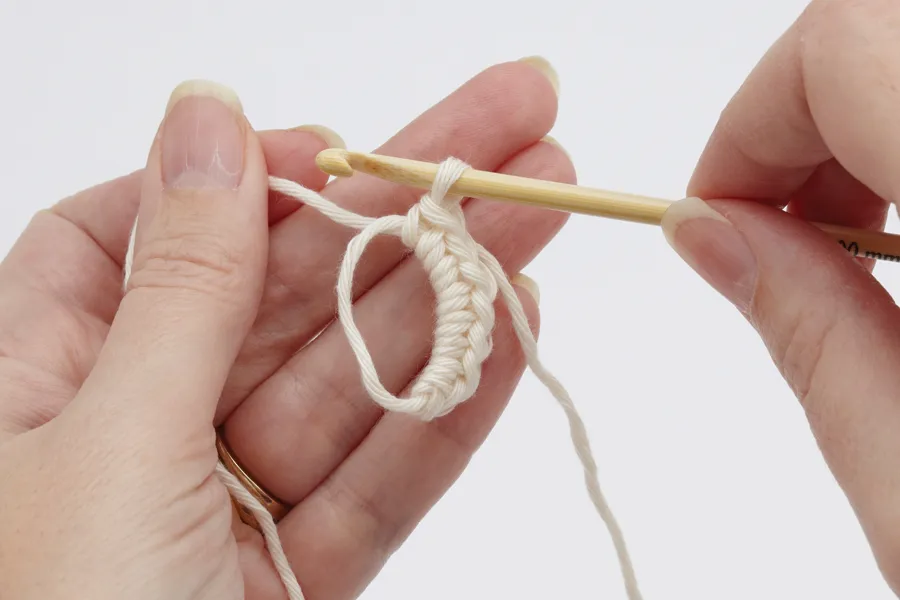
Neps
Neps is a term referring to matted or tangled clumps or fibres within a yarn.
These are often removed during the production process, but are often deliberately left in to create interesting effects, such as with tweed yarns.
Picot
A picot is a small loop of chains, which is normally used for decorative effect. You may have seen these use to create trefoil effects.
Pills
Not to be confused with Neps, Pills (or what might be more commonly known as bobbles) are little clumps of fibres that develop on a fabric due to agitation (for example, after repeated washing).
You can get yarns that have been designed to be anti-pilling, which is a good choice for things like baby clothes that will need to be washed often.
The use of bobble or lint removers is not recommended for hand-crocheted items as they have the potential to damage the yarns structural integrity.
Post stitches
Post stitches are stitches where instead of inserting your hook into the stitch, you actually insert your hook around the stitch. This helps to give a raised texture to your crochet fabric, and is often used to create ribbing for garments.
Post stitches will be described as front post (FP) or back post (BP), which refers to whether you insert your hook 'around the post' of the stitch from the front or the back of the fabric.
Give it a try with our how to crochet post stitches tutorial.
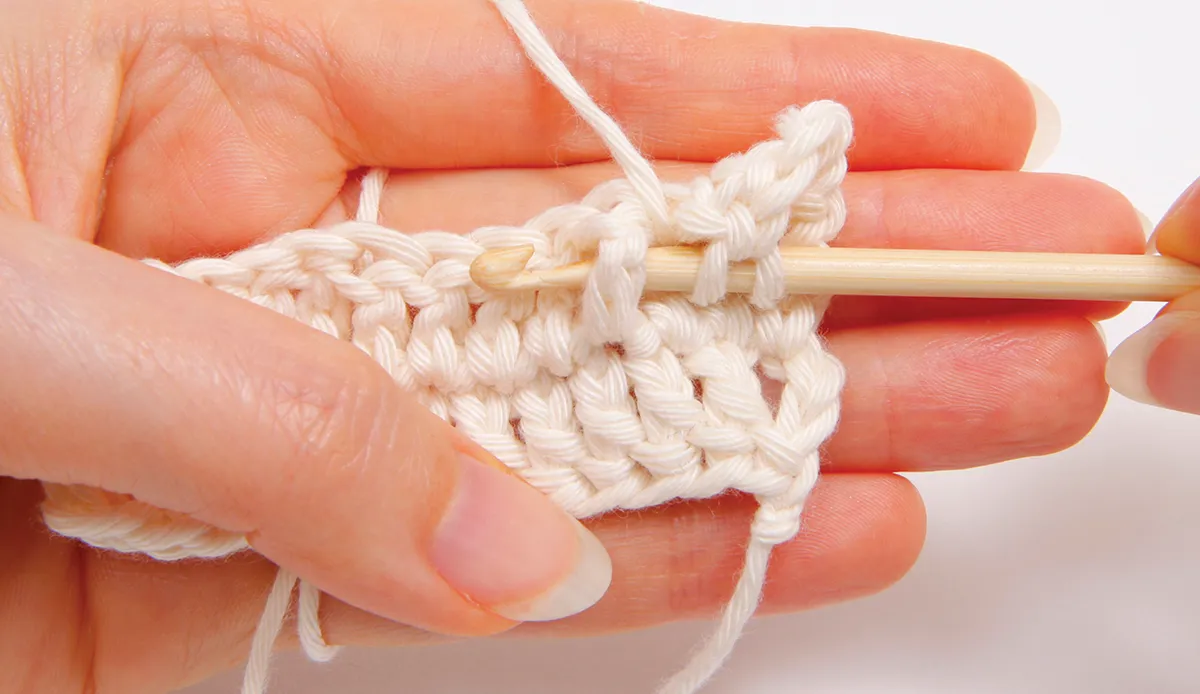
Right side/Wrong Side
You may not realise it but crochet does actually have a right and a wrong side - it's just not always obvious which is which!
Basically, when you make your first row of stitches, these stitches are facing you, and for this example we'll call this the right side. Then when you go onto the next row, you will have turned your work, so now even though the stitches are still facing you, this is the wrong side.
If that's a bit confusing, just think of making a circle where you don't turn. The side facing you when you make your stitches is the right side, and your stitches will look crisp and defined. If you turn it around the wrong side will be a lot less defined and will more obviously be the back of the stitches.
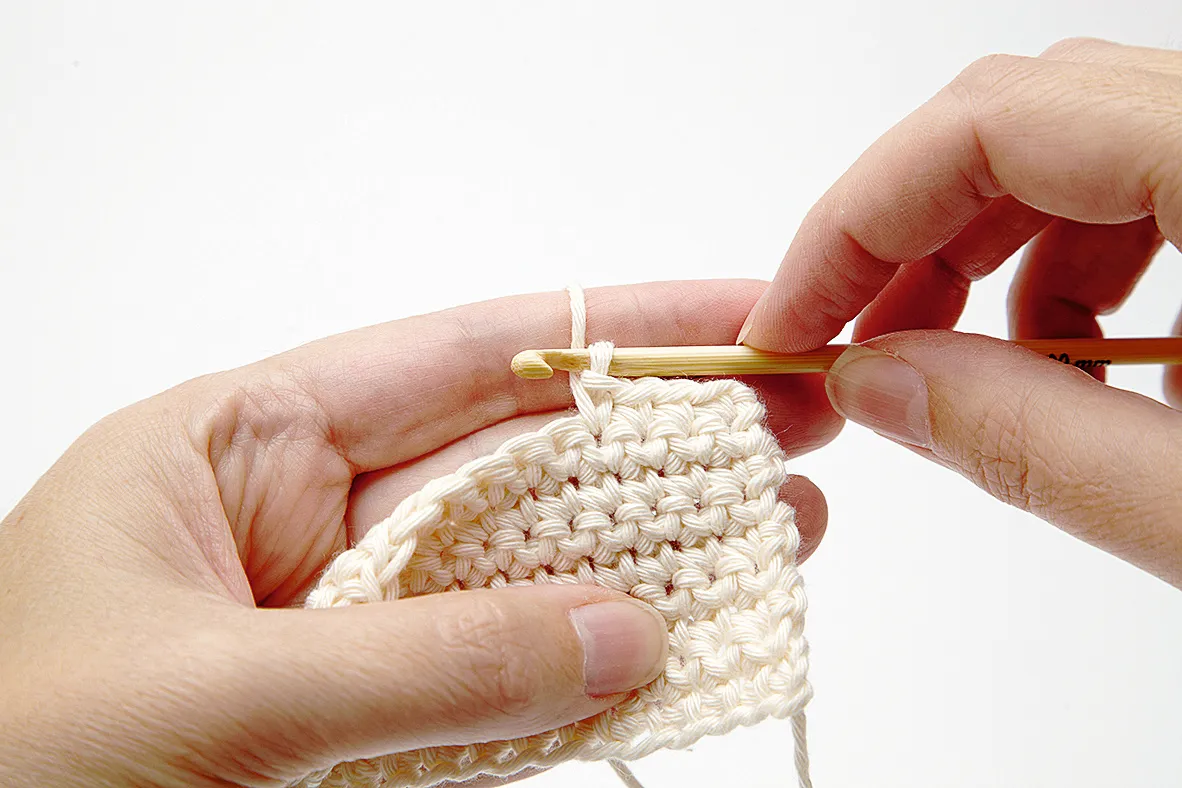
Seam
The term 'seam' is used in the same way as it is in sewing and tailoring - used to describe the area where two shapes are joined together.
There are various techniques for how to create a seam in crochet, check out our guide on how to join crochet shapes together.
Sable
An acronym for 'Stash Accumulation Beyond Life Expectancy'. When you've collected more yarn than you could ever possibly use - the struggle is real!
Skein
The word 'skein' or 'hank' describes yarn that has been wound up differently to a ball or bobbin. Skeins are usually made by the yarn being wound in large loops, which are then tied together and twisted into what we call a skein.
This is normally used on hand spun or hand dyed yarns, one reason for this is it enables dyers to 'paint' colours evenly over sections of yarn. There is also less pressure put on the yarn while winding it into a skein rather than a ball which can affect the final yarn weight.
If you are trying to unwind a skein, it is best to use a combination of a swift and wool winder (more on these below - some people will try wrapping it around a chair or a pair of hands to unwind it, but this often leads to tangles!)

Stash
This is the name given to your ever-growing collection of yarn and/or craft supplies. For example, "Use any yellow DK from your stash."
Stashbusting
The practice of intentionally making things using yarn from your stash in an attempt to tame it. Beware, this can become a lengthy endeavour, depending on the magnitude of said yarn stash.
Swift
A swift is vital for unwinding yarn skeins. It is a device that works a bit like a spinning umbrella.
You untwist your skein and remove any ties so you have one large loop of multiple strands of yarn. You then place this onto the swift and adjust the swift so that it holds the loop of yarn in safely place. Then attaching one end of the yarn to a wool winder, you unwind the yarn, and the swift rotates to allow you to unwind the yarn evenly into a yarn cake that you can easily crochet from.
Swifts come in a variety of materials from wood to plastic, and normally come with a way of attaching the swift to a table for sturdiness. Find out more about the different types available in our guide to the best wool winders and yarn swifts.
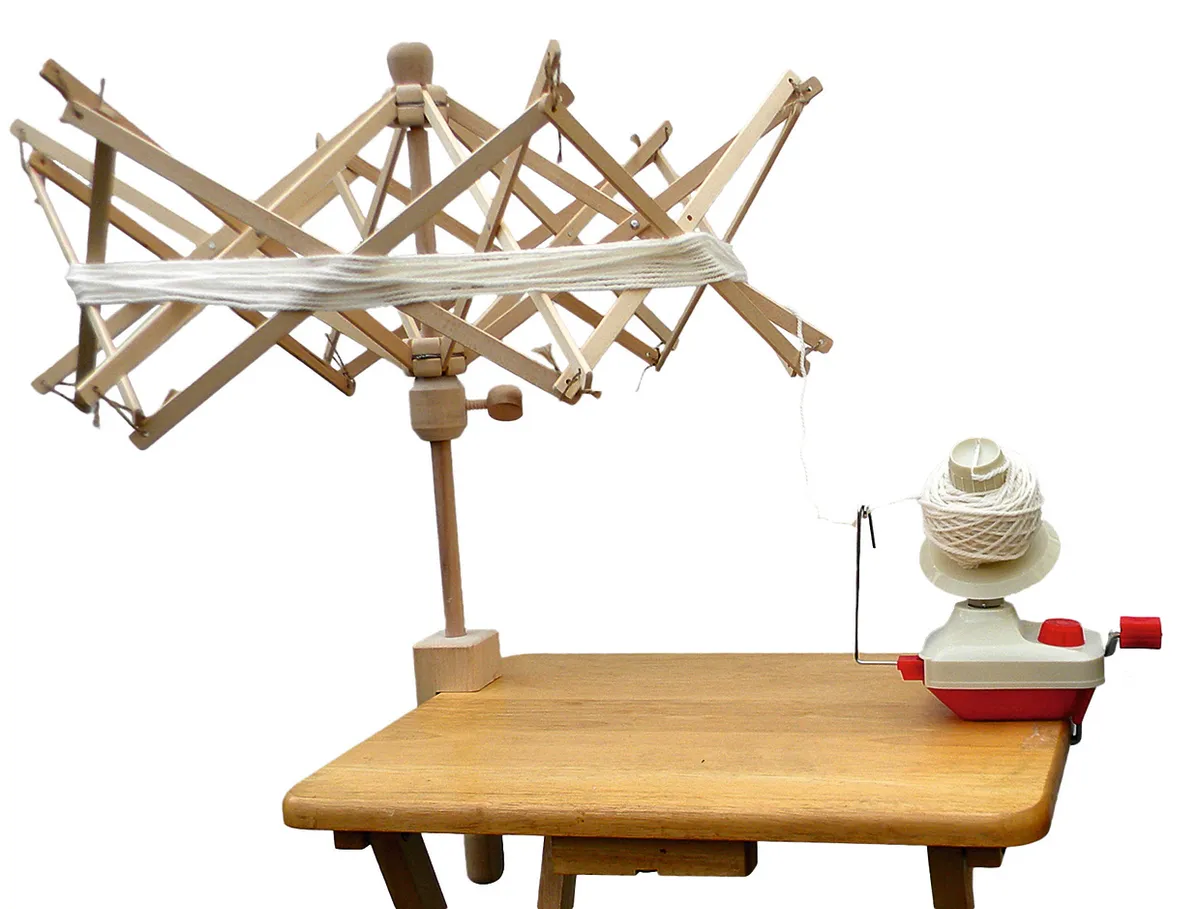
Treblemaker
One of our very own crochet terms that is given to gutsy crocheters. It’s a play on the word troublemaker and can be used interchangeably with hookster or, if you’re feeling extra cheeky, hooker. E.g. Join our online community by sharing your Simply Crochet makes with our hashtag #SCtreblemaker.
Tunisian Crochet
Tunisian crochet is a whole different technique that uses a long hook. Instead of working one stitch at a time as in normal crochet, with Tunisian crochet you keep several stitches on the hook at one time, much like knitting, and work and remove the stitches in 'passes' of alternate rows.
It creates an interesting closed fabric that is quite similar to knitted fabric, and there are a range of Tunisian stitches to add variety. You can find our guide on How to do Tunisian Crochet here.
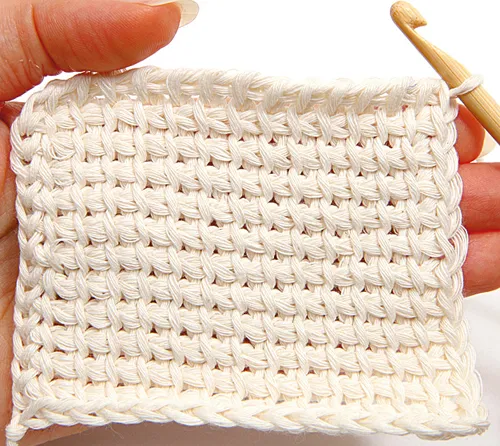
Weight
This is perhaps one of the first crochet terms that will confuse beginners.
When crocheters refer to a yarn weight, they're not talking about how heavy the yarn is, but how thick the yarn is (for example, this yarn is an Aran weight).
Yarns come in a variety of weights, and the names for these can differ depending on whether you're from the UK or the US. You can find our guide to yarn weights here!
WIP
An acronym for 'Work-in-progress'.
Wool winder
A yarn winder or wool winder is exactly what it sounds like - a device for winding wool.
Normally used in combination with a swift, these little devices allow you to neatly unwind skeins of yarn into a yarn cake which is easier to crochet with.
There are a few different types available, from simple and affordable winders to fancy wooden ones for huge skeins. Take a look at our guide to the best wool winders and yarn swifts for more info.
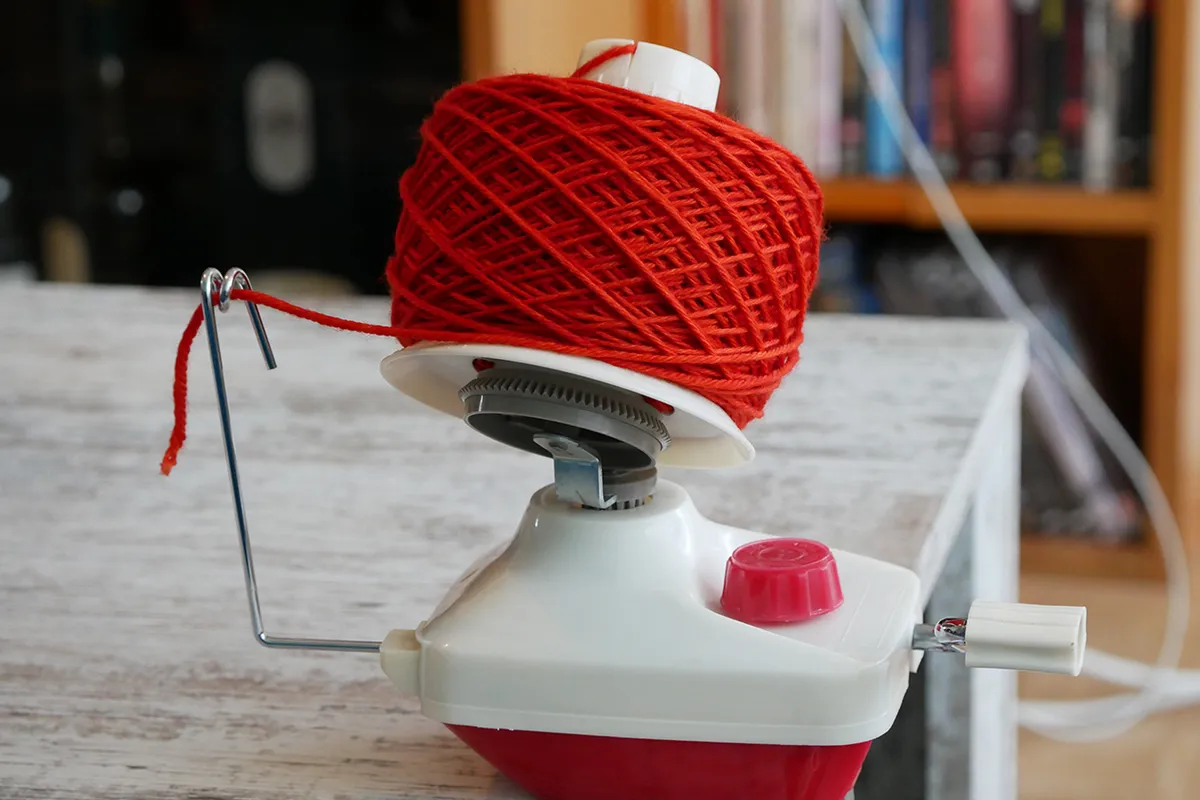
Yarn bomb
The act of decorating public places with crochet or knitting, sometimes covertly. This art form is also known as yarn graffiti or yarn storming.
Getting to grips with crochet terms
When you're first starting your journey into crochet it can seem like there's an awful lot of different crochet terms and abbreviations. But don't worry, as you learn new stitches and try different patterns all of that fancy lingo quickly becomes second nature.
Become a stitch expert
Start expanding your skills today with the help of our complete library of crochet stitches on Gathered.
